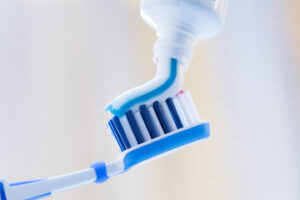Hair trends come and go, but a few staples make their grand re-entrances every now and then. And amongst the services that have been making waves on Instagram are babylights, a balayage technique that creates subtle, sun-kissed highlights. Scroll down to explore more about Macrolights Hair.

The color consultation is a crucial step in any salon visit, but it’s especially important for those who are getting custom hair extensions. Your client will need to understand what they’ll be walking into – how the process works, when they can expect touch-up and move-up appointments (should these be separate from their coloring services), etc.
During the color consultation, it’s essential to understand your client’s color goals. How far do they want to go with their transformation? Do they want an all-over color change or just a few well-placed highlights? Having this information on hand will help your stylist ensure they’re able to accomplish what you have both agreed upon.
Once you have this information, it’s important to share some inspirational images with your client, so they can see what their new color will look like when they walk out the door. This will give them the confidence they need to be confident in their appointment and will encourage them to show up for their service prepared.
After your color appointment, a gloss/glaze/toner is the perfect way to seal in your beautiful work and keep your hair looking healthy. Our preferred product is Redken Shades EQ. We recommend this for all color services and is available in hundreds of shades (including clear). Please note that longer or thicker hair may require additional color charges. All color services include Signature Blow Out.
Pre-lightening Treatment
Whether the client is going platinum blond, swapping their brown base for light blond or simply adding pops of blonde dimension throughout, it is important that the hair is light enough to allow these highlights and balayage colors to truly shine. This is where pre-lightening comes in. Pre-lighting is a more complex chemical treatment that involves the use of a bleach mixture, typically containing peroxide, to break down and remove natural hair pigment (melanin). By reducing the amount of melanin in the strands, the hair becomes a lighter canvas for color application.
The best way to determine the right level of pre-lightening for a client is to consult with an expert stylist who will know how much lift the hair can safely take, taking into account any previous coloring and the hair’s texture. For example, fine textured hair may require shorter processing times than coarse hair to avoid overexposure and potential damage.
Once the desired underlying tone has been achieved with balayage or highlights, the stylist will neutralize the hair by washing it out using INVIGO Color Brilliance Color Protecting Shampoo. This sulfate-free shampoo helps to rebalance and strengthen the hair’s inner structure after technical services such as bleaching, dyeing and straightening.
Once the hair is clean and dry, a toner is applied over the top of the highlighted or balayage areas to personalize the shade. We recommend choosing a toner from our wide range of INVIGO Color Touch, Color Fresh and Koleston Perfect tones to match the client’s desired results. Toners help to soften the look of highlights or balayage by reducing brassiness and yellow tones, leaving the hair looking shiny and vibrant. To complete the look, we recommend styling the hair into a beachy waves or a soft voluminous blowout. This will allow the client to embrace their new blonde glow with confidence.
Micro Highlights
The micro highlighting technique is the latest beauty craze resulting in a gorgeous, sun-kissed effect on hair. Using ultra-fine precision foiling, this highlighting method simulates the way the sun naturally lightens hair, creating a delicate, multidimensional appearance that blends seamlessly with your natural color. Unlike traditional highlights, which are often chunkier and more obvious in comparison, micro highlights create a subtle and beautiful look with a soft transition between shades.
A skilled hair stylist can use several techniques to achieve the desired result. Foiling involves wrapping small sections of the hair in foil and applying lightener, whereas balayage utilizes freehand painting to give a more natural-looking highlight. A combination of the two is known as “foilayage” and can be used to create a soft, ombre effect. Whatever the style, your hair stylist will customize the placement of your micro highlights to suit your individual face shape, color, and texture.
Depending on the amount of lift desired, your hair colorist may choose to apply the highlight pattern all over or limit it to certain areas, such as around the face and the natural part. They can also add a touch of color to your hairline and temples, or create a soft ombre with shadow roots.
As with all coloring services, proper aftercare is key for keeping your hair looking healthy and vibrant. It’s recommended that you switch to sulfate-free shampoos and conditioners that are formulated for color-treated hair, and that you visit the salon for regular trims and touch-up appointments every 8-12 weeks.
In addition to maintaining a healthy base, utilizing sulfate-free products will keep your hair color looking vibrant and fresh. Additionally, regularly using a conditioning treatment like Olaplex will protect your hair from damage caused by oxidation and help reduce the likelihood of damage.
Post-lightening Treatment
From icy platinum blondes to ethereal pastel colors, today’s clients have endless options when it comes to lightening hair. The most common dye techniques include highlighting, balayage, and bleaching. Regardless of which shade or how much you want to lighten, it is always important to protect the health of your hair. That’s why we recommend using a pre-colour treatment before every lightening service.
As the name suggests, this type of treatment is designed to help prepare and protect the hair from the grueling lightening process. It works a little like priming and moisturizing the skin before applying makeup, to create an optimal base for the hair dye you’re about to use.
Pre-lightening treatments come in a variety of forms, but they’re all aimed at strengthening your hair during the lightening process. Some contain ingredients that help remove build-up, while others are specifically formulated to help prevent damage. They may also contain proteins that help fortify your strands, leaving them with more strength once they’ve been lightened.
Bleaching your hair is a highly-technical procedure. It requires an understanding of how the different strands of your hair react to the lightener and how much pressure each strand can take. This is especially true for textured hair, which can have a very thin or thick diameter.
Choosing the right type of lightener and the amount of time you leave it on your hair is crucial to achieving the results you desire. For example, using a low-ammonia bleach such as Magnet Blondes Ultimate Powder 7 will allow you to lighten your hair up to seven levels without damaging it.
Another way to limit the damage caused during the lightening process is by using the balayage technique. This involves isolating strands of varying thicknesses and colors on which the oxidant will act to lighten your hair. By doing this, your stylist can control how quickly your hair will lighten and create the perfect highlights for you. This method is ideal for a subtle, sun-kissed effect on brown or natural blond hair. It is also the best option for textured hair, as it can reduce breakage by minimizing the amount of hair dye used.


